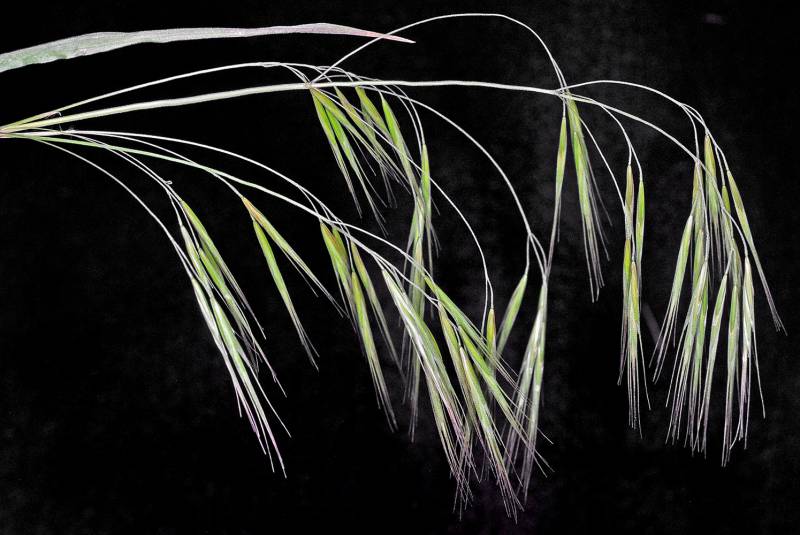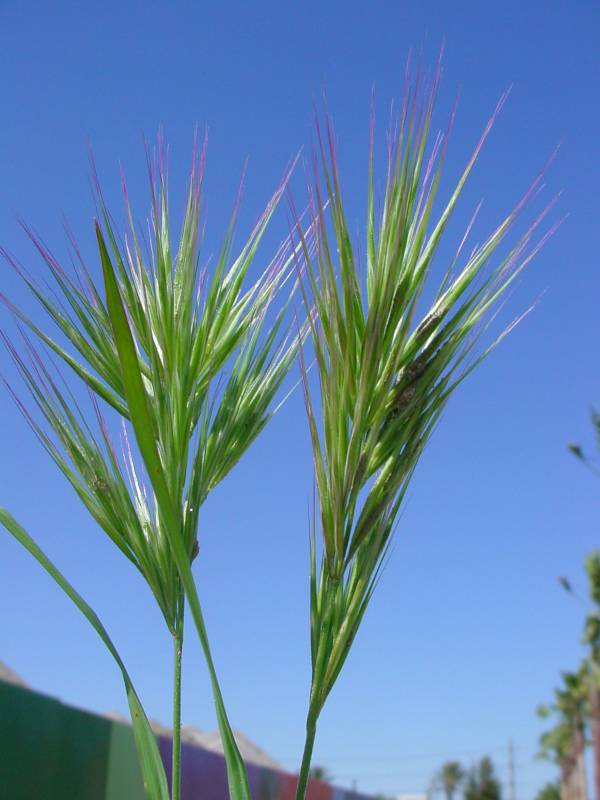Bromus tectorum
Bromus rubens
cheat grass
fox-tail brome
Sheaths closed;
ligules 1.5-3 mm. long, lacerate;
blades flat, 1.5-3 mm. broad, finely pubescent.
Inflorescence a dense, ovoid, purplish panicle 3-8 cm. long, the lower branches strongly ascending, much shorter than the glumes;
spikelets subsessile, stiffly erect, 5- to 9-flowered, 17-22 mm. long including the awns;
glumes narrowly lanceolate, the first 8 mm. long, 1-nerved, the second 3-nerved, 2-3 mm. longer;
lemmas 13-15 mm. long, the two teeth 4-5 mm. long, the awn attached between the teeth 2 cm. long, curved;
stamens 2, included.
Bromus tectorum
Bromus rubens
Occurring on both sides of the Cascades crest in Washington; Alaska to Baja California, Mexico, east across North America to the Atlantic Coast.
Occurring east of the Cascades crest in south-central Washington; south-central Washington to California, east to Idaho, Utah and Arizona.
- Local floras:
BC,
CA,
OR,
WA
- Local Web sites:
CalFlora,
CalPhotos,
Flora NW,
PNW Herbaria
WildflowerSearch
iNaturalist (observations)
USDA Plants Database
- LBJ Wildflower Center
- SEINet
- Plants of the World Online
- Encyclopedia of Life
- Wikipedia
- Google Image Search
- Local floras:
BC,
CA,
OR,
WA
- Local Web sites:
CalFlora,
CalPhotos,
Flora NW,
PNW Herbaria
WildflowerSearch
iNaturalist (observations)
USDA Plants Database
- LBJ Wildflower Center
- SEINet
- Plants of the World Online
- Encyclopedia of Life
- Wikipedia
- Google Image Search



